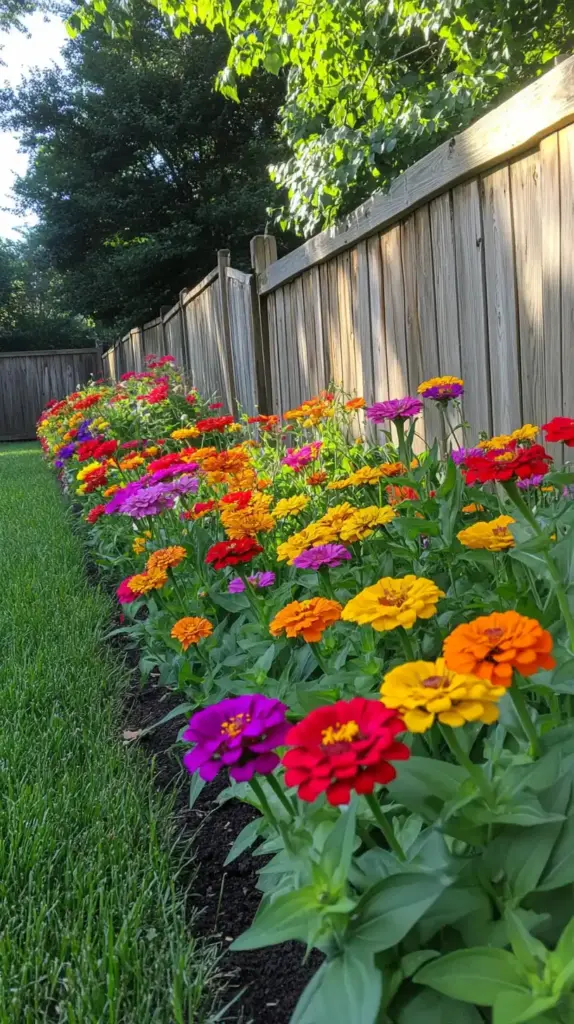Zinnia garden along fence designs are among the most vibrant and creative ways to upgrade your outdoor space. Whether you’re looking to conceal an unsightly fence, boost curb appeal, or attract buzzing pollinators, zinnias provide a low-maintenance, high-impact solution. These colorful, fast-growing blooms last all summer long and can complement nearly any garden style—from whimsical cottage vibes to flower bed ideas for the front yard. In this guide, you’ll find 10 inspiring ways to design your zinnia garden along fence, including kid-friendly rainbow borders, drought-tolerant layouts, and combinations that pair beautifully with pollinator-friendly plants like lavender hedges. Ready to reimagine your fence line? Let your zinnia garden along fence flourish in full color this season.
Table of Contents
🌈 1. Rainbow Gradient Zinnia Fence
One of the most visually stunning ways to plant a zinnia garden along a fence is by arranging your flowers in a rainbow gradient. This design turns your flower bed into a living spectrum of color and is especially eye-catching when viewed from a distance.
Plan Your Color Layout
To get started, sketch out your rainbow pattern in this order: red, orange, yellow, green, blue, and purple. It’s important to group at least 3–4 plants of each color together to avoid a scattered look. Varieties like California Giant zinnias work perfectly—they offer a wide color range and can grow up to 4 feet tall, providing excellent backdrop coverage.
Create Smooth Transitions
The magic of this design lies in the blending between colors. Use intermediate shades as “transition zones.” For example:
- Between red and orange, plant coral or salmon varieties.
- To bridge yellow and green, try chartreuse or lime green zinnias.
- Use soft lavender between blue and purple sections.
These subtle blends make your garden appear cohesive rather than patchy.
Layer by Height
Zinnias come in different heights, and layering them smartly enhances the depth of your display:
- Tallest varieties (like Oklahoma Series) go against the fence.
- Medium varieties (such as Benary’s Giant) form the middle row.
- Short zinnias (like Thumbelina) create a neat front border.
Keep It Blooming
To keep your rainbow zinnia fence looking fresh all summer, deadhead regularly. Snip off faded flowers every couple of days to encourage new blooms and keep the color flowing from top to bottom.
🏡 2. Cottage Garden Charm with Zinnias
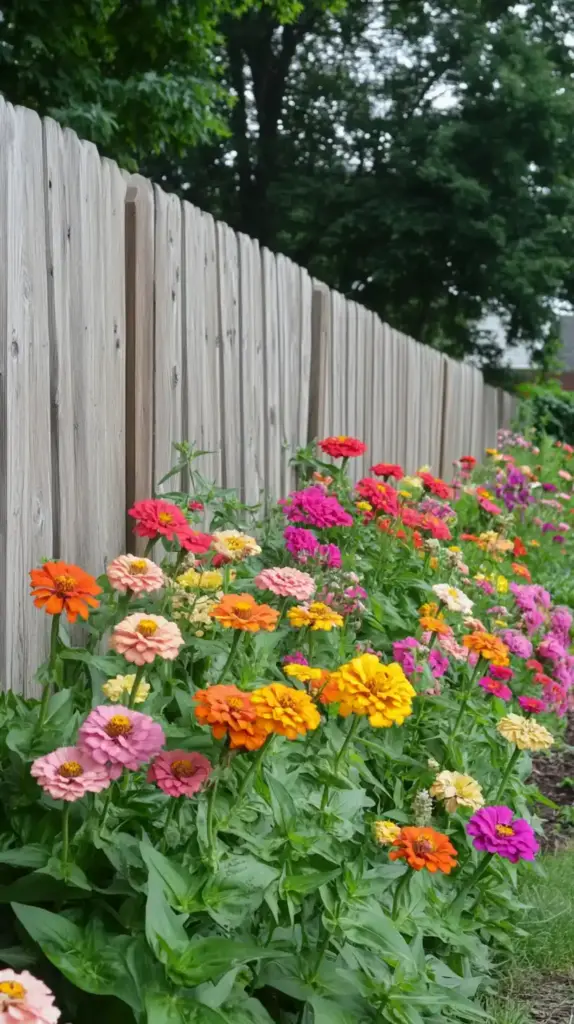
If you’ve ever dreamed of an English countryside look right in your backyard, combining zinnias with other cottage-style flowers can help you achieve that effortlessly romantic vibe. This idea turns your zinnia garden along a fence into a whimsical, layered display bursting with texture and soft, overlapping blooms.
Mix in Classic Cottage Flowers
Zinnias pair beautifully with traditional cottage garden staples. Try mixing in:
- Cosmos – their feathery foliage and pastel shades add a light, airy feel.
- Snapdragons – perfect for vertical structure and contrasting shapes.
- Lavender or Salvia – introduces scent and a calming purple tone.
- Sweet peas – climbers that weave beautifully through fences for added charm.
Use a soft color palette—think dusty pinks, whites, pale oranges, and soft purples—to complement the bolder zinnias and create visual balance.
Embrace a Loose Planting Style
A true cottage garden looks unplanned, even though it’s usually very intentional. Plant zinnias in clumps rather than rows, and allow some self-seeding where possible. Avoid over-manicuring—let the blooms spill naturally over the edges of paths or garden borders.
Include Climbing Elements
Take advantage of your fence by allowing climbing flowers to intermingle with your zinnias. Clematis or morning glories add vertical interest and draw the eye upward, making the entire setup feel lush and full.
Seasonal Rotation
To maintain the charm year-round, plant spring bulbs (like daffodils or tulips) that will bloom before your zinnias take off. This creates a seamless transition and keeps your fence garden lively from spring through late summer.
🦋 3. Creating a Butterfly Paradise Border
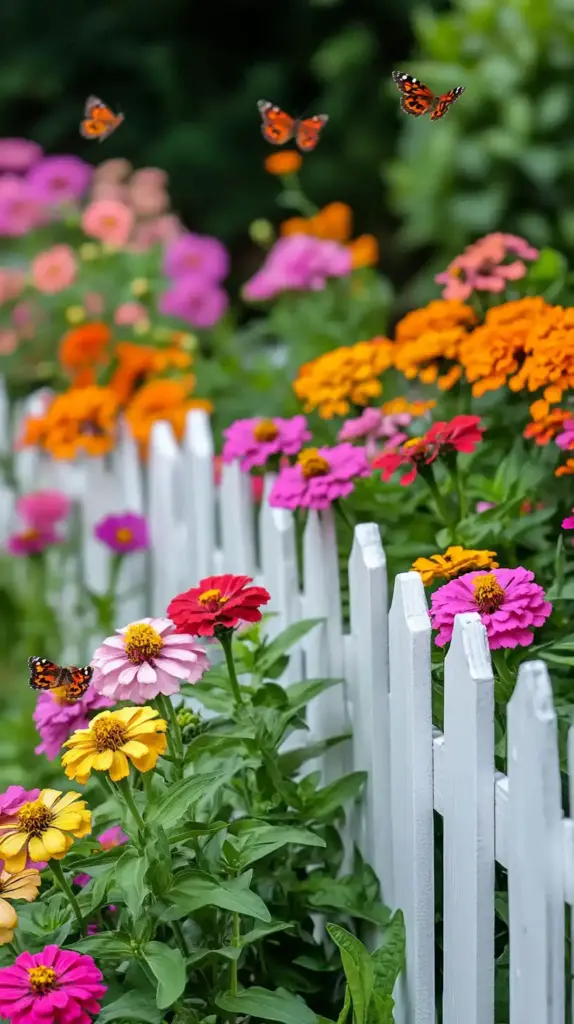
Want to turn your zinnia garden along a fence into a buzzing hub of butterfly activity? Zinnias are famously nectar-rich and colorful, making them irresistible to butterflies—especially when thoughtfully planted. With just a few adjustments, you can create a fence line that flutters with life all summer long.
Choose Butterfly-Friendly Zinnia Varieties
Not all zinnias are created equal when it comes to attracting butterflies. Opt for varieties like Zinnia elegans, particularly the California Giant and Benary’s Giant series. These produce wide, open blooms that give butterflies an easy landing and access to nectar.
Cluster Planting for Impact
Rather than spacing plants evenly in a line, group them in clusters of 5 to 7 plants, leaving 6–8 inches between each cluster. These tight groupings act like “butterfly lounges,” giving them plenty of space to land, feed, and rest in one go.
Add Butterfly-Loving Companions
To draw in a diverse range of butterfly species and extend the blooming season, plant zinnias alongside:
- Mexican sunflower (Tithonia)
- Butterfly bush (Buddleja)
- Native lantana
- Purple coneflower (Echinacea)
This companion planting not only boosts nectar production but also creates a multi-layered, colorful tapestry along your fence.
Include Resting & Puddling Zones
Butterflies need more than just flowers. Add flat stones between zinnia clusters to create sunny basking spots—they love warming their wings in the morning sun. You can also set out a shallow dish filled with moist sand and water as a butterfly “puddling station.” It’s a simple but highly effective feature that supports hydration and mineral intake.
Maintenance Tips for Butterfly Bliss
To keep your garden a continuous butterfly magnet:
- Deadhead blooms regularly to promote new growth
- Water deeply and consistently, but not too frequently
- Avoid pesticides or herbicides
- Leave air gaps between clusters for safe butterfly flight paths
Creating a pollinator-friendly environment adds movement, beauty, and ecological benefit to your zinnia garden along a fence—and turns your backyard into a fluttering sanctuary.
🖤 4. Modern Monochromatic Design: Creating a Sleek Zinnia Garden
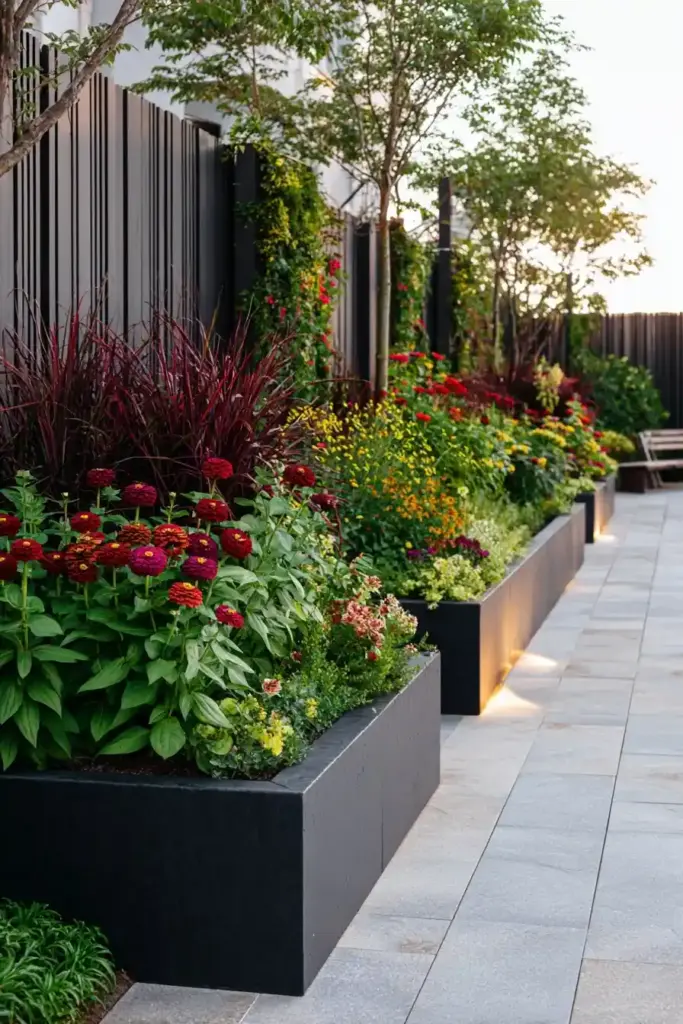
Looking for a clean, contemporary way to style your zinnia garden along a fence? A modern monochromatic design might be just what your landscape needs. This approach proves that you don’t need a rainbow of colors to make a bold statement—sometimes a single hue, thoughtfully arranged, delivers the most impact.
Pick a Bold Color Theme
Start by choosing a single color family that speaks to your aesthetic. Deep burgundy, soft blush, or even bright white can each set a distinct mood. For a rich, dramatic look, try varieties like:
- Queen Red Lime
- Benary’s Giant Wine
- Oklahoma Burgundy
Together, they create subtle variations within one color zone, producing a sophisticated ombré effect across your garden bed.
Use Geometry for Visual Structure
Modern garden design thrives on order and symmetry. Instead of free-form planting, lay out geometric shapes using stakes and string—such as rectangles or grids—before placing your zinnias. Group plants by height:
- Tall varieties go in the back (against the fence)
- Medium-height zinnias form the middle tier
- Compact types round out the front border
This approach gives your zinnia garden an architectural edge while maximizing visual flow.
Elevate With Contemporary Accents
Accessories can make or break the minimalist aesthetic. Enhance the look with:
- Matte black planters or modern pots
- Sleek metal garden stakes
- Subtle LED uplighting
- Minimalist seating nearby
Pro tip: Lay down black mulch between sections to create high-contrast borders. It not only suppresses weeds but also makes your chosen zinnia color pop dramatically.
Keep It Clean and Sharp
A tidy garden is essential for maintaining that crisp, modern vibe. Regularly:
- Deadhead to prevent wilting blooms from dulling the space
- Edge your mulch beds for defined lines
- Prune stray stems to preserve symmetry
Just 15 minutes every few days can keep your design looking intentional and elegant.
✂️ 5. Creating the Perfect Cut Flower Garden Station
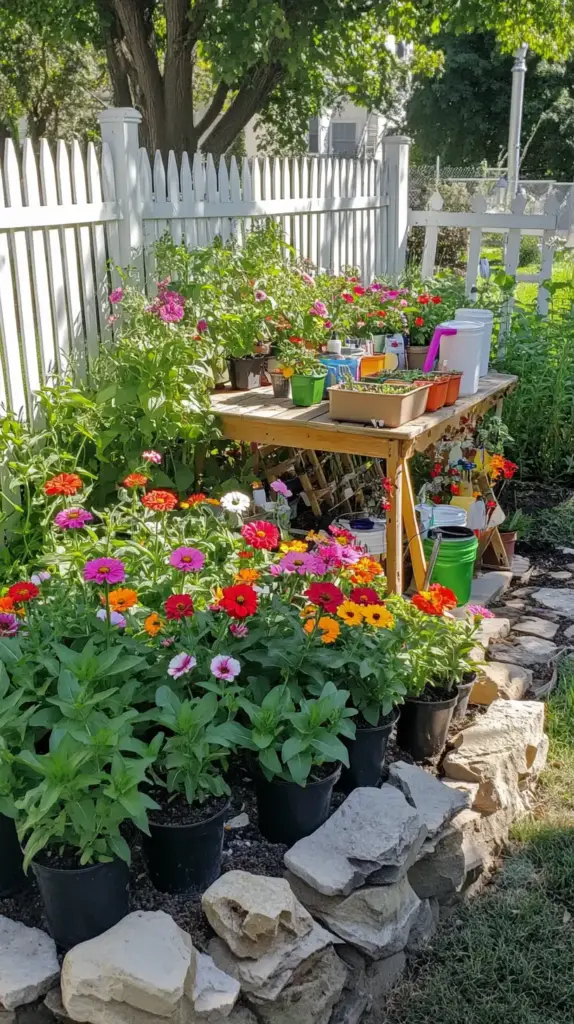
One of the best perks of having a zinnia garden along your fence is the endless supply of fresh-cut blooms. But if you’ve ever fumbled with shears and water buckets in the middle of your garden, you know how chaotic harvesting can get. That’s why setting up a dedicated cut flower station can completely transform your gardening routine—and make flower cutting as joyful as the blooms themselves.
Choose a Smart, Shaded Spot
The first step is choosing a practical location. Look for a section along your fence that’s close to your garden beds but also accessible from your home. A shady or partially shaded corner is ideal—it offers relief from the heat during afternoon harvesting sessions. Use gravel, bricks, or pavers to create a level, dry surface that won’t get muddy or unstable.
Must-Have Tools & Simple Storage
Keep your essential tools close by to streamline the process. Your station should include:
- Sharp garden shears or scissors (always have a backup)
- Buckets or containers for freshly cut blooms
- A spray bottle with clean water to refresh stems
- Twine and ties for securing stems
- A small trash bin for discarded foliage
Mount a waterproof cabinet or storage box to your fence and add hooks for tools you use daily. This setup keeps your area clutter-free and efficient.
Set Up a Functional Work Surface
Even a small table makes a big difference. A fold-down surface attached to the fence works well in compact spaces. Consider enhancing it with:
- A built-in measuring stick or ruler for cutting uniform stem lengths
- A non-slip mat to keep vases or buckets stable
- A mini shelf or caddy for flower food, rubber bands, and tags
This workspace ensures you’re not bending, balancing, or running inside every few minutes.
Pathways Matter
Install stone or gravel paths that allow easy access to your blooms without stepping into the beds. Make sure your paths are wide enough for a cart or small wheelbarrow so you can move cut flowers with ease. A herringbone pattern with stepping stones adds function and flair.
Zinnia Varieties That Love to Be Cut
To keep your station productive, choose long-stemmed, heavy-blooming zinnia varieties like:
- Benary’s Giant
- Queen Red Lime
- Oklahoma Series
- Profusion Series
For continuous harvests, try succession planting every 2–3 weeks during the growing season.
🪜 6. Vertical Growing System: Maximizing Your Fence Space with Zinnias
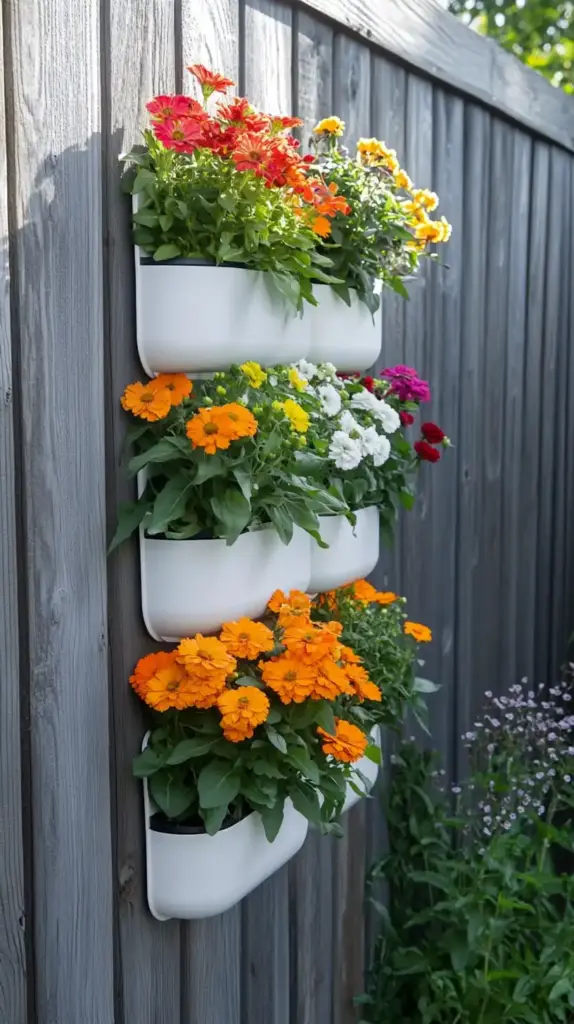
Short on horizontal space but dreaming of a lush zinnia garden along your fence? A vertical growing system is the perfect solution. This clever setup not only makes the most of your garden real estate, but it also turns your fence into a stunning living wall of blooms—layered, colorful, and totally photo-worthy.
Build a Tiered Planter Wall
Tiered planters are a smart way to grow upward. Use heavy-duty wall brackets that can support wet soil—at least 50 pounds per planter—and space each tier 12–15 inches apart vertically. This ensures your zinnias get enough light and airflow between rows.
Here’s a height combo that works well:
- Back row: Tall varieties like California Giant
- Middle tier: Mid-size zinnias such as Zinderella
- Front row: Short types like Thumbelina
This layering gives a full, cascading effect while keeping every plant visible.
Create a Cascading Curtain of Color
Add hanging baskets in staggered heights to create a “living curtain” that softens hard fence lines. Use:
- 12″ deep baskets with moisture-retaining liners
- Compact, ever-blooming varieties like Profusion zinnias
- Bonus trailing accents like sweet potato vine or nasturtiums
This arrangement gives movement, texture, and vertical drama to your fence garden.
Use Decorative Trellises for Support
Zinnias can get top-heavy, especially in tight vertical spaces. Install ornamental trellises between planter levels to provide structure and avoid flopping stems. Always set up trellises before planting to protect delicate roots and save yourself a mid-season headache.
Try Pocket Planters for a Living Wall Look
Fabric pocket planters can be attached directly to your fence for a truly unique vertical display. They’re great for:
- Maximizing growing area in small yards
- Adding depth and texture
- Easy watering and drainage
For best results, install a drip irrigation system to keep moisture levels steady—especially during hot spells.
A vertical zinnia setup not only saves space but transforms your fence into a dynamic, blooming masterpiece. It’s an ideal option for urban gardeners or anyone looking to elevate their flower game—literally!
🌈 7. Children’s Rainbow Garden
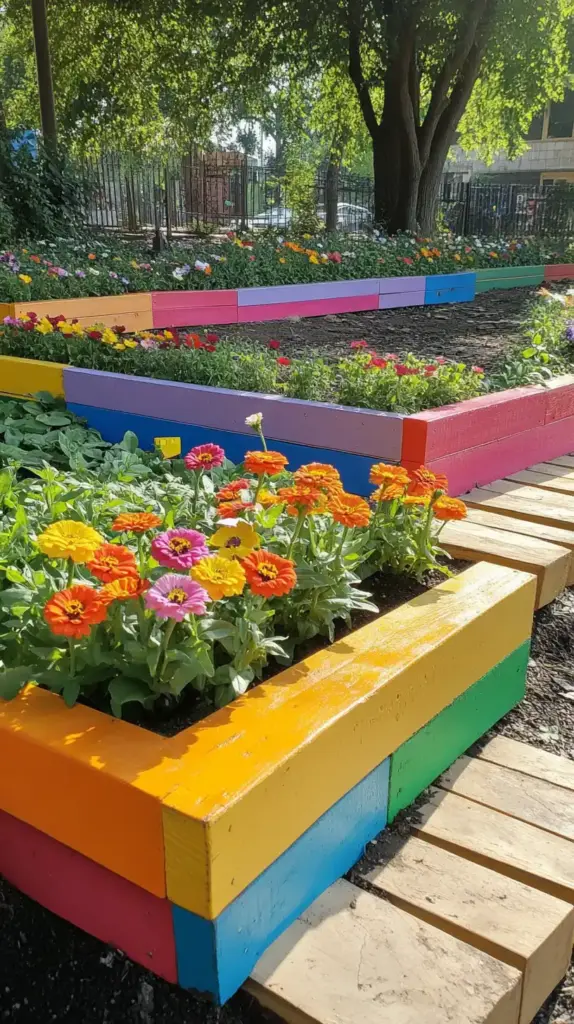
Looking to create a fun and educational space for little ones? A zinnia garden along the fence can easily double as a colorful, interactive playground when designed with kids in mind. By combining bright blooms, hands-on features, and learning opportunities, you can transform a garden into a magical world children will love exploring.
Choose Kid-Friendly Zinnias for a Rainbow Effect
To achieve that eye-popping rainbow look, use bold varieties like:
- California Giant – Tall and vibrant for back rows
- Thumbelina – Compact and perfect for front borders and smaller hands
Plant zinnias in blocks of color, grouping at least 5–7 plants of each hue together for maximum visual impact. Kids respond to bold, simple patterns—so skip the random scattering and go for structured color zones.
Make It Interactive and Imaginative
To spark curiosity and creativity, include hands-on features throughout the garden. Try:
- Decorated stepping stones as pathways
- Weatherproof flower markers with fun facts
- Butterfly ID charts mounted to the fence
- Rainbow pinwheels for motion and whimsy
- A small, child-height watering station with mini cans
These elements encourage kids to engage, observe, and ask questions, all while playing in nature.
Add Learning Through Play
Incorporate subtle educational tools to teach gardening basics:
- Color-matching games using the flower beds
- Height measuring poles next to each bloom
- Cards showing the plant lifecycle clipped to the fence
- A “Pollinator Watch” zone with seating for quiet observation
These features make gardening fun and meaningful, turning every visit into a learning experience.
Garden Chores Become Garden Adventures
Children love responsibility—especially when it feels like a game. Use a rotating “garden helper” chart with age-appropriate tasks like:
- Spotting new blooms
- Tracking butterflies and bees
- Watering with tiny cans
- Deadheading (a.k.a. giving “flower haircuts”)
These mini chores teach responsibility while helping maintain your zinnia garden along the fence.
Best of all? The garden becomes a magnet for butterflies, hummingbirds, and bees—bringing the wonder of nature up close for young explorers.
☀️ 8. Creating a Drought-Resistant Zinnia Border
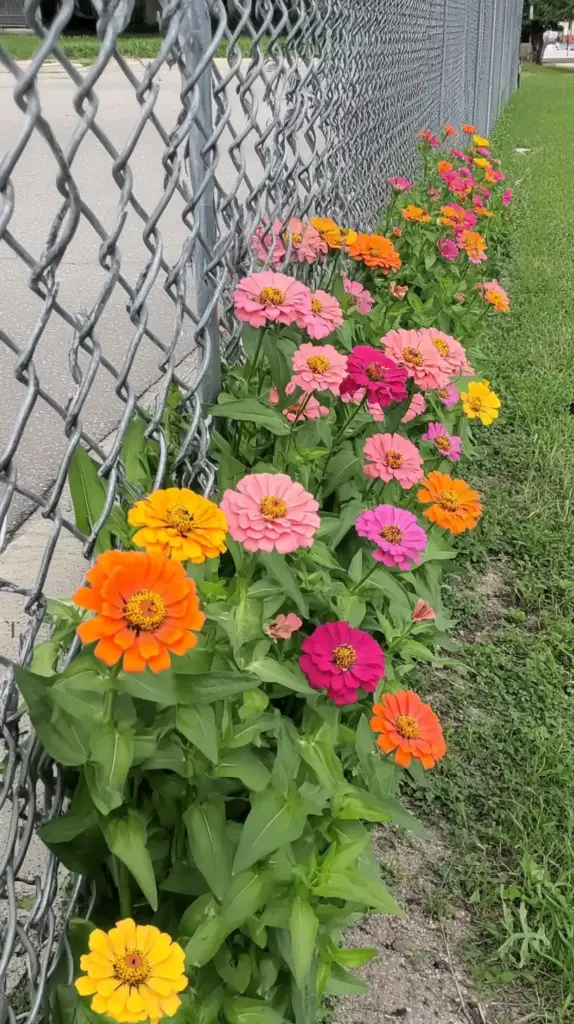
If you live in a hot, dry region or simply want to conserve water, designing a drought-resistant zinnia garden along your fence is both practical and beautiful. With the right zinnia varieties, smart planting techniques, and a few eco-friendly hacks, you can enjoy vibrant blooms all summer long—without the guilt (or the water bill).
Choose Drought-Tolerant Zinnia Varieties
Not all zinnias are equally resilient. For dry conditions, prioritize compact, small-flowered types like:
- Oklahoma Series – hardy and colorful
- Profusion Series – low-growing and continuous bloomers
- Desert Series – specifically bred for arid climates
These varieties require less water and are more likely to thrive during heatwaves compared to their larger, thirstier cousins.
Mix in Tough Companion Plants
Enhance both the beauty and drought resistance of your border by combining zinnias with other water-wise plants. Excellent companions include:
- Lantana – colorful and sun-loving
- Salvia – adds vertical interest
- Verbena – low and spreading, it locks in moisture
- Russian Sage – tall, airy texture and great contrast
This mix not only looks stunning along a fence but also creates a resilient ecosystem that supports pollinators.
Install Efficient Irrigation
Water smarter—not more often. A drip irrigation system delivers moisture right to the root zone with minimal waste. It can reduce your garden’s water use by up to 40% and helps prevent diseases caused by overhead watering. Set a timer to run early in the morning for best results.
Mulch to Lock in Moisture
Mulch is your best ally in a drought-tolerant garden. Apply a 3-inch layer around your zinnias to retain soil moisture, suppress weeds, and insulate roots.
Top mulch picks for a drought-smart garden:
- Pine straw
- Shredded bark
- Cocoa hulls (bonus: they smell amazing!)
- Composted leaves
Just be sure to leave a little space around the plant stems to prevent rot.
With these strategies, your zinnia garden along the fence can remain lush and lively, even during scorching summers—and all while saving water and money.
📸 9. Creating the Perfect Photography Corner with Zinnias
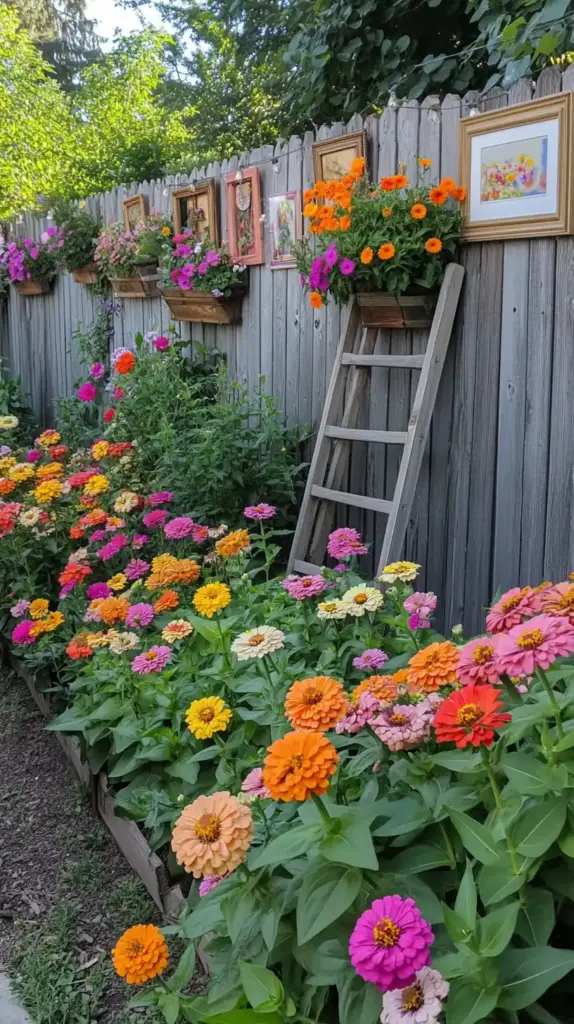
Love snapping garden photos or sharing blooms on social media? You can easily turn your zinnia garden along a fence into a picture-perfect backdrop with just a few thoughtful tweaks. A photography corner doesn’t require a massive makeover—just smart planting, clever design, and a few creative props.
Choose a Clean, Neutral Backdrop
The background can make or break a garden photo. Start by giving your fence a fresh coat of paint in a soft, neutral color—like sage green, light gray, or creamy white—to make zinnia colors pop on camera. For added interest, hang:
- Vintage garden tools
- Rustic window frames or mirrors
- Shuttered panels for a charming cottage effect
These elements add texture and context without overwhelming the flowers.
Layer Heights and Play With Color Theory
Use the “triangle technique” to arrange your plants for depth:
- Tall varieties (e.g., Oklahoma Pink, Giant Lime) in the back
- Mid-height zinnias in the middle
- Shorties (like Thumbelina) in the front
For visual drama, combine complementary colors:
- Purple + Yellow
- Coral Pink + Lime Green
- Red + White for bold contrast
These combinations are naturally eye-catching and photograph beautifully.
Add Personality With Decorative Accents
To give your photography corner a signature style, mix in charming garden décor:
- Vintage watering cans
- Solar lanterns for golden-hour glow
- Wooden signs with quotes or garden names
- A trellis or arbor for height and structure
These touches not only enhance your photos but make your space inviting in real life, too.
Create Focal Points for Stunning Shots
To guide the viewer’s eye, establish focal points using:
- Clusters of same-colored blooms
- Large decorative pots
- A bench or chair for staged photos
- A butterfly station (bright pink + orange zinnias work wonders here)
Don’t forget to leave open spaces (also called “negative space”) between groupings. These visual breaks help create balanced compositions that look professional and polished.
🐝 10. Creating a Wildlife-Friendly Zinnia Border: A Haven for Local Fauna
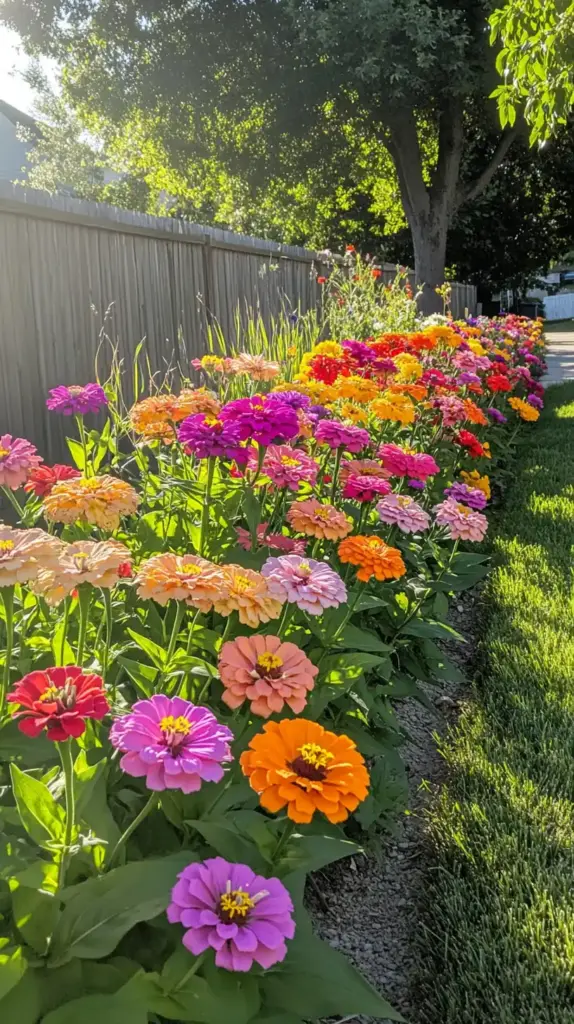
If you’ve ever dreamed of a garden alive with buzzing bees, fluttering butterflies, and chirping birds, you’re in luck—a zinnia garden along your fence can be a magnet for local wildlife with just a bit of planning. By combining zinnias with native plants and thoughtful features, you can transform a simple border into a thriving ecosystem.
Plant in Pollinator-Friendly Clusters
Start with zinnia varieties like California Giant, which produce large, vibrant blooms loved by pollinators. For the best results, plant in clusters of at least five. This makes it easier for butterflies and bees to find their next nectar stop and creates what we like to call “wildlife landing pads.”
Pair your zinnias with other native nectar producers like:
- Black-eyed Susans
- Purple coneflowers
- Bee balm
- Milkweed (for monarchs)
This combo ensures your garden supports a variety of beneficial species.
Add a Simple Water Source
You don’t need a pond to attract wildlife. A ceramic birdbath with a solar-powered bubbler provides fresh water and motion—perfect for birds and pollinators alike. Place it 3–4 feet from dense plants so birds have a clear flight path and nearby cover from predators.
Create Microhabitats for Insects and Birds
Boost biodiversity with small, natural “homes” tucked into your fence border:
- Stacks of stones with crevices for insects
- Bundles of dried stems or bamboo for solitary bees
- Brush piles or twigs for shelter
- Native grasses for overwintering bugs
These microhabitats help support the beneficial insects that keep your garden balanced and beautiful.
Use Natural Gardening Practices
To make your zinnia garden along the fence truly wildlife-friendly:
- Avoid chemical pesticides and herbicides
- Leave some dried zinnia heads through fall and winter—seed-eating birds love them
- Let some plants go to seed to provide food and natural mulch
A light touch with garden maintenance encourages a more sustainable and welcoming environment for local fauna.
Let Nature Do the Work
Once your wildlife border is established, it practically maintains itself. You’ll enjoy:
- Butterfly visitors in spring and summer
- Hummingbirds sipping nectar from colorful zinnias
- Goldfinches feeding on dried seed heads in fall
- A natural balance of predators and prey that keeps pest issues to a minimum
The beauty of this style is how it evolves—every year brings new visitors and fresh surprises. In just two seasons, your garden can transform into a true haven for the creatures that bring life to your landscape.
❓ Frequently Asked Questions (FAQ)
🌼 What is the best zinnia variety for planting along a fence?
For a vibrant zinnia garden along a fence, opt for tall varieties like California Giant, Benary’s Giant, and Oklahoma Series. These provide height, color, and long-lasting blooms that create a stunning backdrop against fencing.
💧 Are zinnias drought-tolerant for dry climates?
Yes! Zinnias are relatively drought-tolerant once established. For especially dry conditions, choose compact varieties like the Profusion Series or Desert Zinnias, and use mulch and drip irrigation to retain moisture.
🐝 Do zinnias attract pollinators and wildlife?
Absolutely. Zinnias are magnets for bees, butterflies, and hummingbirds. Pairing them with native flowers like black-eyed Susans or purple coneflowers can transform your zinnia fence border into a buzzing pollinator paradise.
🪴 Can I grow zinnias vertically on a fence?
Yes! A vertical zinnia garden along a fence is a great way to save space and add visual height. Use hanging baskets, fabric pocket planters, and trellises to support cascading or upright zinnia varieties.
✂️ Are zinnias good for cut flower gardens?
Zinnias are one of the best flowers for cutting. Long-stemmed types like Benary’s Giant and Queen Lime produce vase-ready blooms that last for days. Plant in succession to keep your cutting station stocked all season.
👶 Can kids help grow a zinnia garden?
Definitely! Zinnias are easy to grow and come in bright colors that kids love. Involve them by planting a rainbow zinnia garden along a fence, adding stepping stones, fun signage, and kid-sized watering tools.
🌿 Conclusion
Transforming a plain fence into a vibrant, blooming showpiece is simpler than most gardeners think. With these 10 creative ideas, your zinnia garden along fence space can evolve into a multipurpose feature—whether you’re attracting pollinators, crafting a whimsical rainbow path for kids, designing a cutting garden, or simply adding charm to your outdoor space.
Zinnia garden along fence designs are not only eye-catching, they’re also easy to maintain and pair beautifully with low-maintenance plants like those featured in our beginner-friendly perennial guide. For extra curb appeal, consider integrating zinnias into your front yard flower bed layout or blending them with pollinator-attracting lavender hedges.
The beauty of a zinnia garden along fence lines is how adaptable and rewarding it can be. With a touch of planning, a splash of color, and the right supporting plants, you can bring your garden vision to life—one cheerful bloom at a time.
🌿 Love gardening inspiration? Follow me on Pinterest for bold plant ideas, tips, and seasonal color!
More Posts
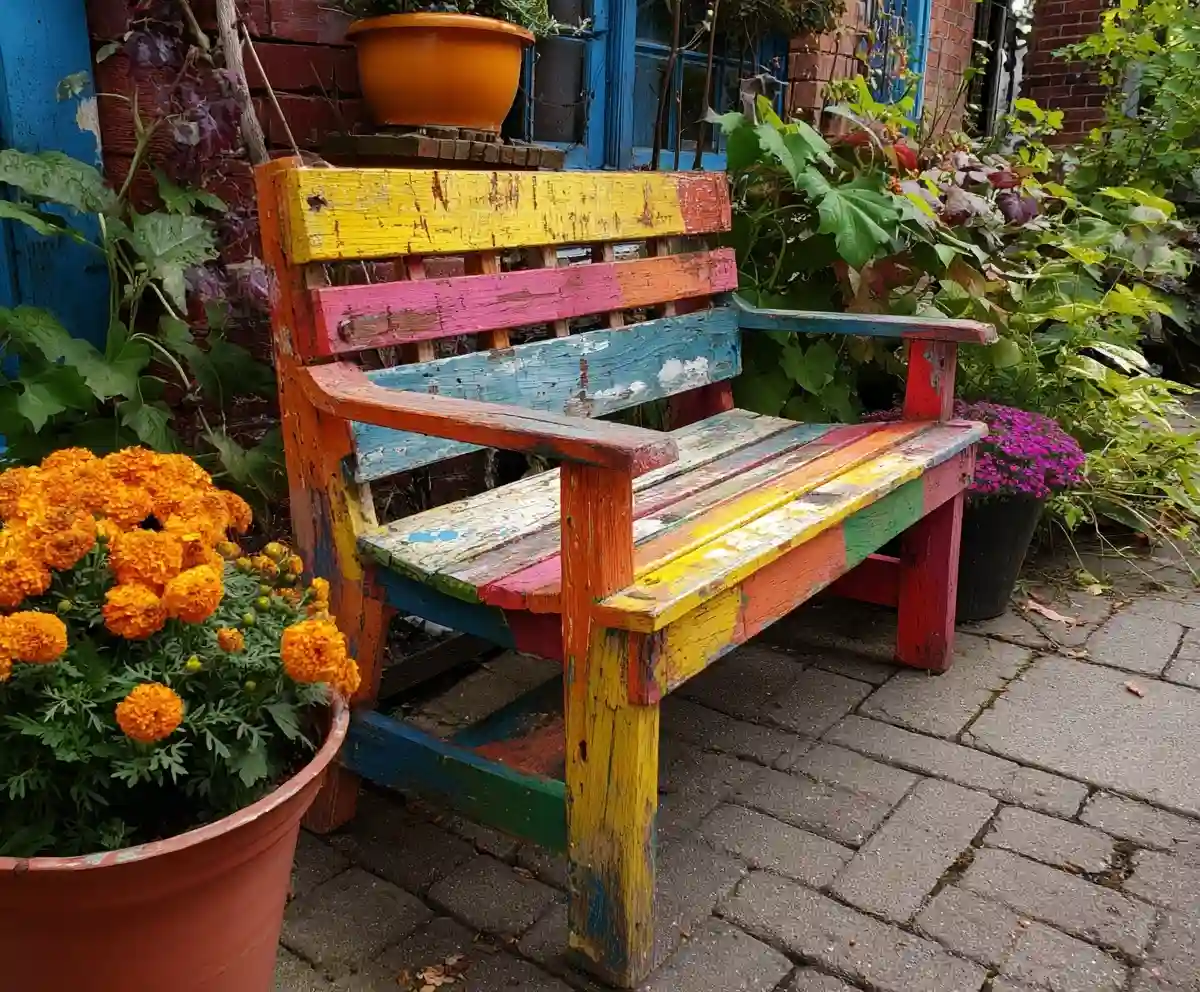
19+ Budget-Friendly Backyard Makeover Ideas
Backyard makeover ideas can turn even the most ordinary outdoor space into a warm, inviting retreat—without draining your wallet.
Read More →
21 Stunning & Simple DIY Clematis Trellis Designs
DIY clematis trellis designs are a beautiful way to blend creativity with function in your garden.
Read More →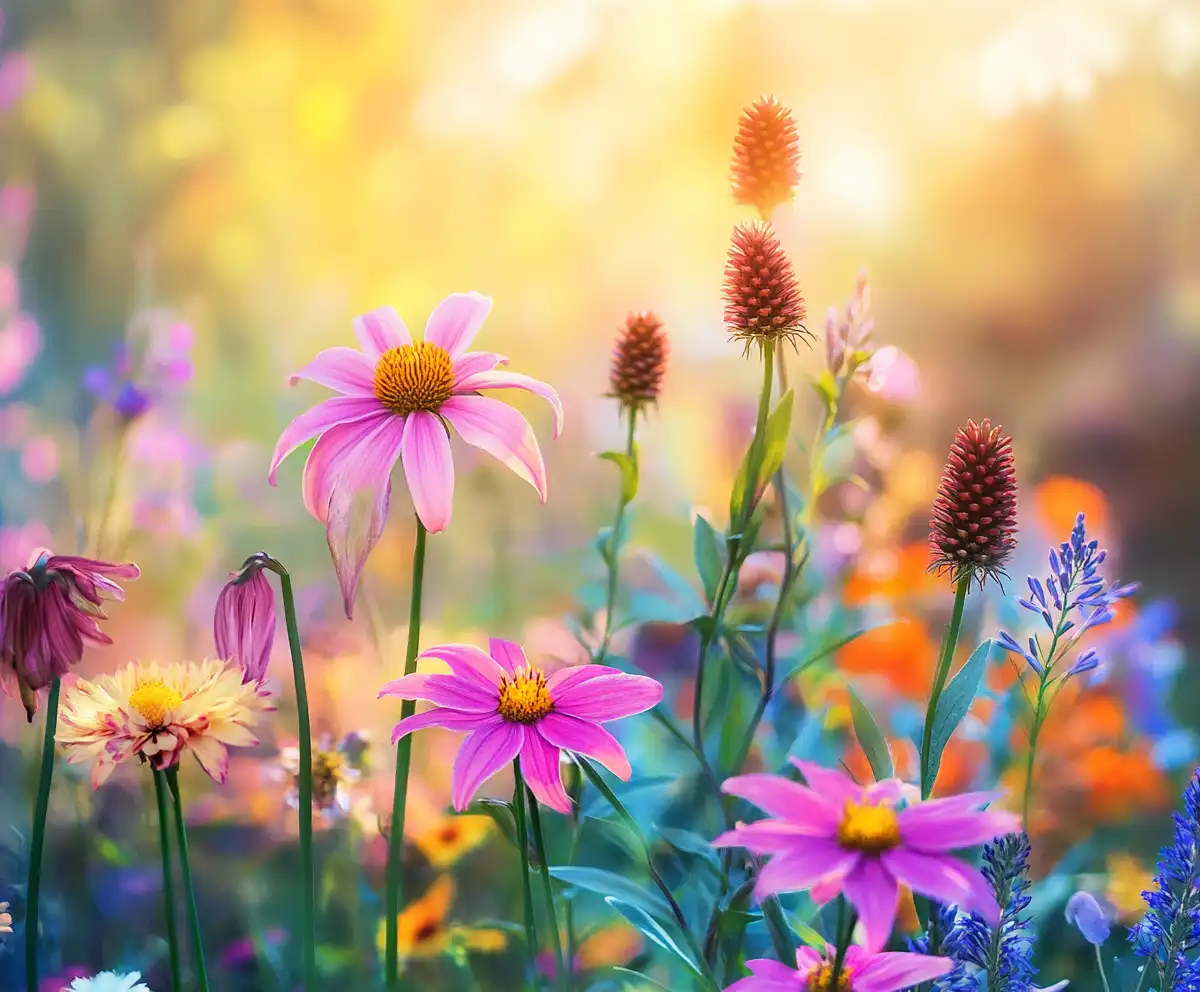
12 Full Sun Perennials That Bloom All Summer
Explore a selection of hardy perennials that flourish and bloom beautifully in full sun throughout the summer.
Read More →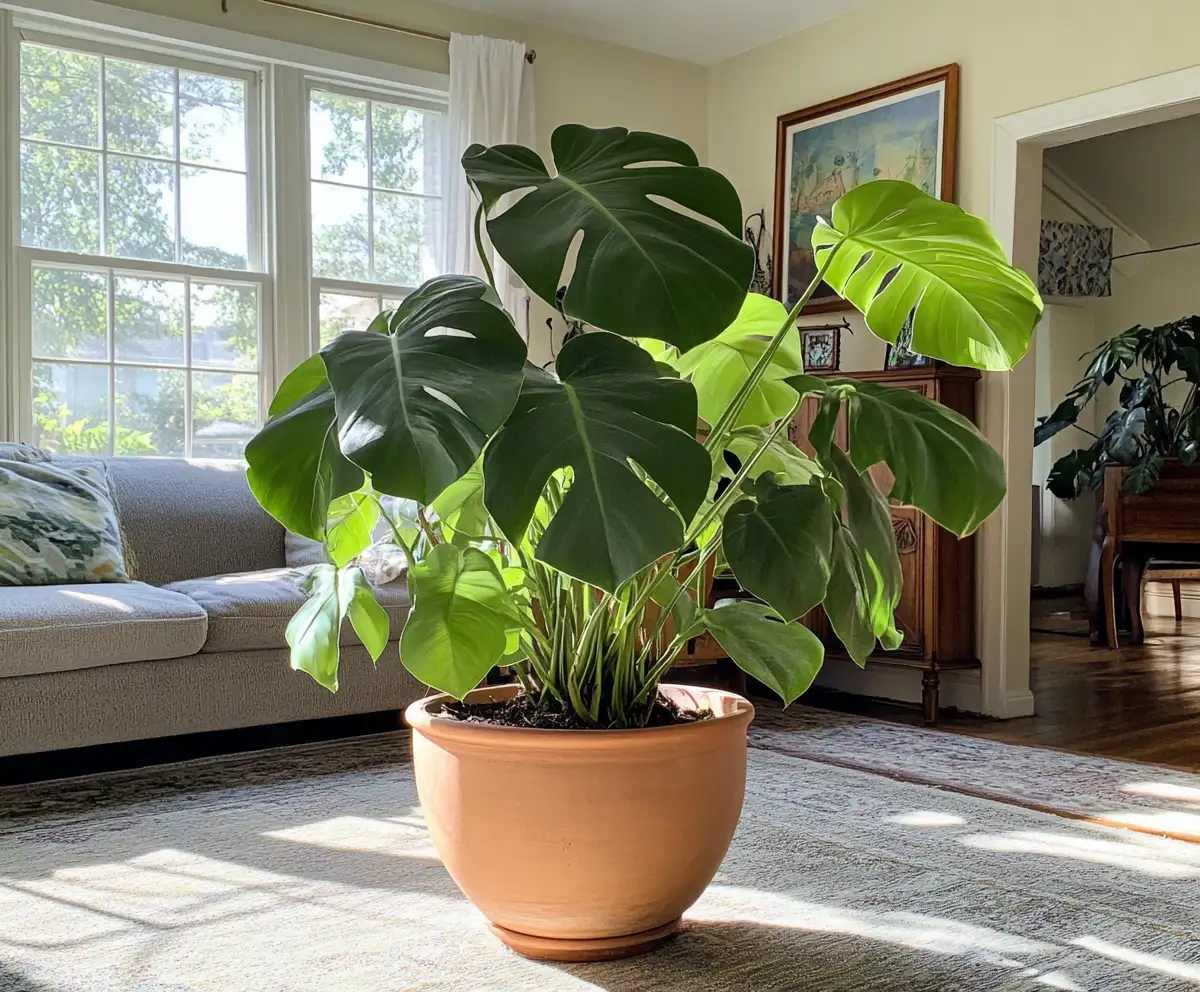
Houseplants for Living Room
Find the perfect houseplants to brighten and purify your living room while adding a touch of nature indoors.
Read More →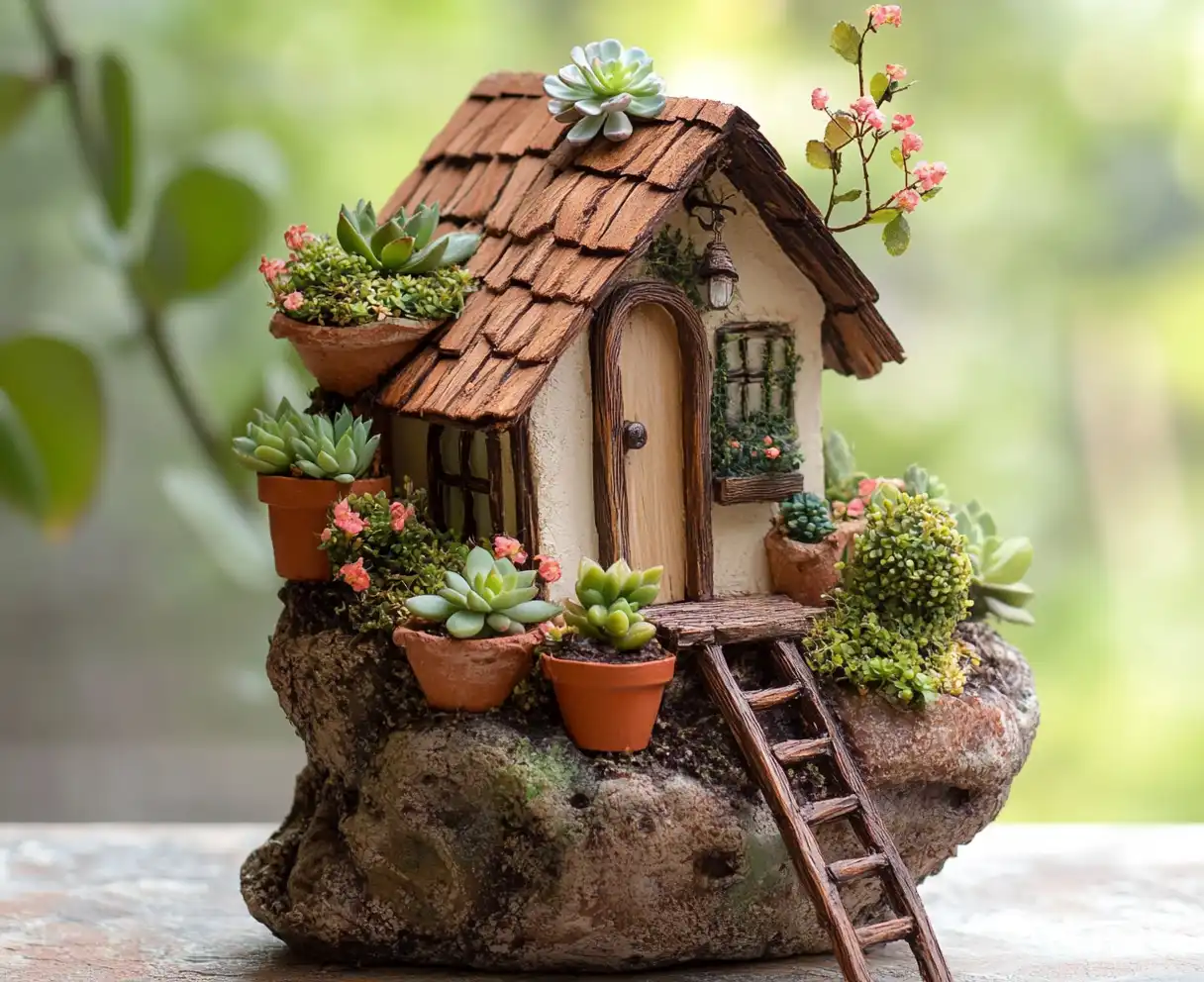
Backyard Play Area for Kids
Create a fun and safe backyard play area for kids with these inspiring design ideas and tips.
Read More →
Top Privacy Trees
Discover top tree varieties that provide natural privacy and enhance your outdoor space.
Read More →

